Norman Rockwell (1894-1978)
Do you think you may own a painting by Norman Rockwell?
Get a Rockwell Certificate of Authenticity for your painting (COA) for your Rockwell drawing.
For all your Rockwell artworks you need a Certificate of Authenticity (COA) in order to sell, to insure or to donate for a tax deduction.
Getting a Rockwell Certificate of Authenticity (COA) is easy. Just send us photos and dimensions and tell us what you know about the origin or history of your Rockwell painting or drawing.
If you want to sell your Rockwell painting or drawing use our selling services. We offer Rockwell selling help, selling advice, private treaty sales and full brokerage.
We have been authenticating Rockwell and issuing certificates of authenticity since 2002. We are recognized Rockwell experts and Rockwell certified appraisers. We issue COAs and appraisals for all Rockwell artworks.
Our Rockwell paintings and drawings authentications are accepted and respected worldwide.
Each COA is backed by in-depth research and analysis authentication reports.
The Rockwell certificates of authenticity we issue are based on solid, reliable and fully referenced art investigations, authentication research, analytical work and forensic studies.
We are available to examine your Rockwell painting or drawing anywhere in the world.
You will generally receive your certificates of authenticity and authentication report within two weeks. Some complicated cases with difficult to research Rockwell paintings or drawings take longer.
Our clients include Rockwell collectors, investors, tax authorities, insurance adjusters, appraisers, valuers, auctioneers, Federal agencies and many law firms.
We perform Norman Rockwell art authentication, appraisal, certificates of authenticity (COA), analysis, research, scientific tests, full art authentications. We will help you sell your Norman Rockwell or we will sell it for you.

Norman Rockwell was an artist who defined his generation with whimsical yet realistic depictions of true Americana. Best known for the cover illustrations that he produced for “The Saturday Evening Post” for nearly fifty years, Rockwell’s style was all his own and is still highly recognizable today. Creating a style which he would come to call “countrified realism,” Rockwell’s images are enduring and on point. One of his most famous paintings is Rosie the Riveter, and was only one of his many patriotic compositions.
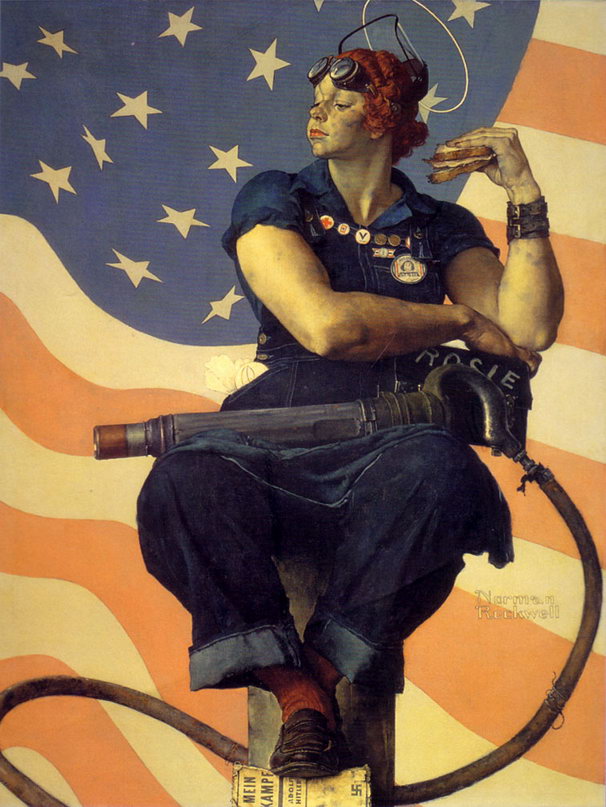
Born in New York City, Rockwell received his first artistic training at the age of 16 at the Chase Art School. Rockwell also attended the National Academy of Design as well as the Art Students League. Early on in his career, Rockwell received commissions to create illustrations for Boys’ Life, St. Nicholas Magazine and the Boy Scouts of America. During this time, he also created book illustrations and other publications for children.

Rockwell attempted to serve in the Navy during World War I, but was turned away for being underweight. At six foot tall and 140 pounds, Rockwell was a lanky man, which essentially came through in the tall and lean characters he would come to portray. Rockwell did not give up though, and stuffed himself with food until he met the weight requirement. However, Rockwell was appointed to be a military artist and never saw active duty.
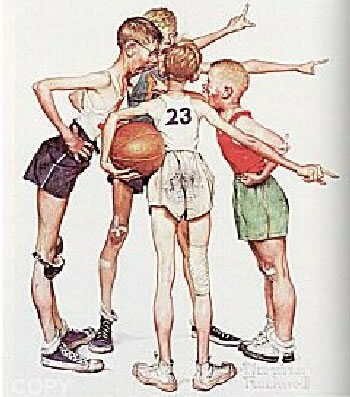
At the age of 21, Rockwell began to share a studio with Clyde Forsythe, a cartoonist who worked for “The Saturday Evening Post.” Through Forsythe, Rockwell gained his first commission with the Post in 1916. Over the next nearly fifty years, Rockwell would illustrate a total of nearly 330 covers for the post, as well as covers for other popular magazines of the day like “Life,” “The Country Gentlemen” and “The Literary Digest.”




In 1916, Rockwell married one of his models, whom he would later divorce in 1930. Shortly thereafter, Rockwell married his second wife, a schoolteacher, with whom he had three children. The family moved to Arlington, Vermont where Rockwell continued to paint and draw his depictions of the idealized American way of life. Rockwell would also marry again after his second wife died in 1953.

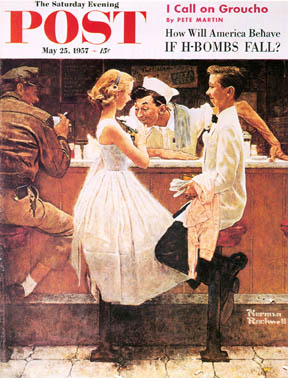
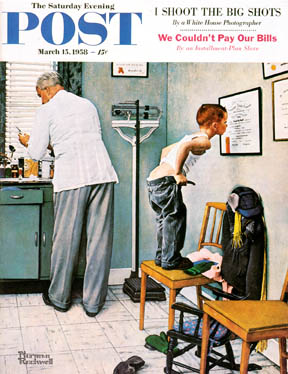
During World War II, Rockwell painted his Four Freedoms series, a group of paintings inspired by a speech from President Franklin D. Roosevelt. They were the Freedom from Want, Freedom of Worship, Freedom of Speech and Freedom from Fear, and were published by the Post.
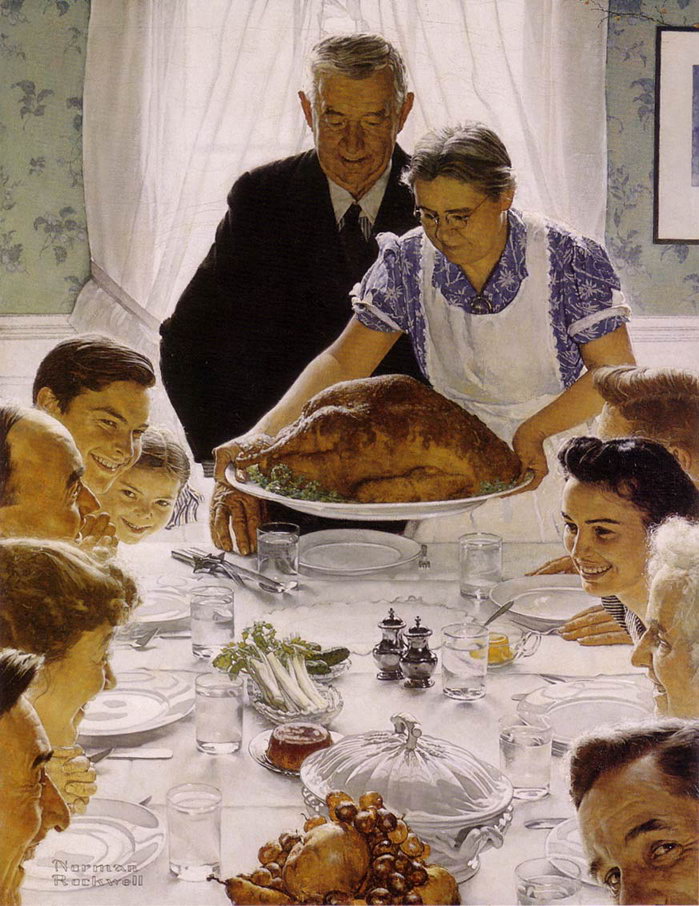
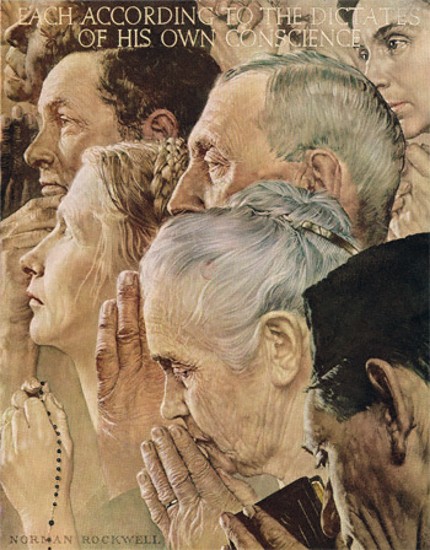

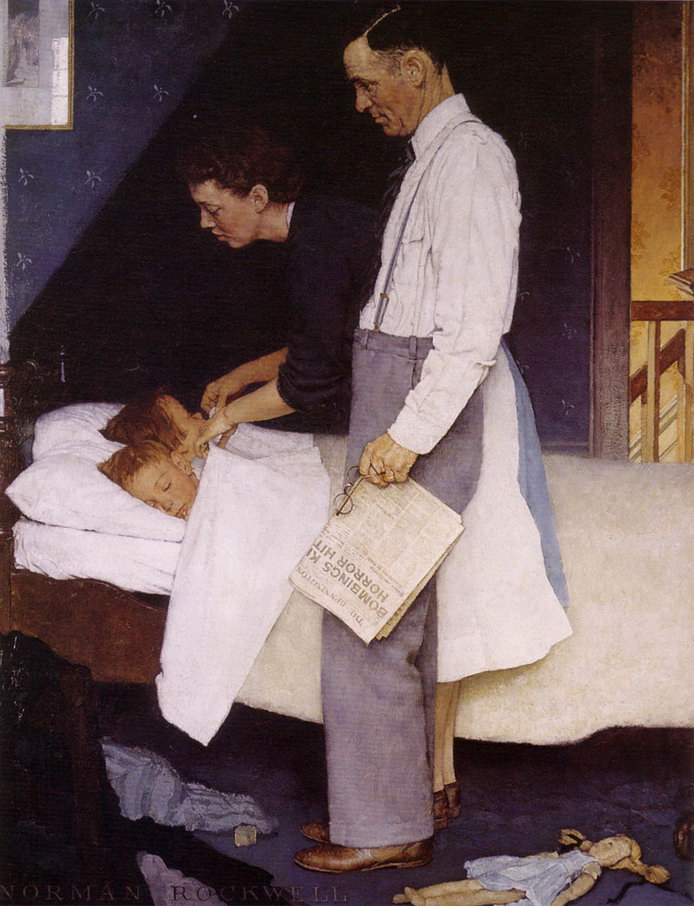
Throughout his career, Rockwell received a number of commissions to create paintings and illustrations. He painted portraits of presidents FDR, Kennedy, Johnson, Nixon and also of other world leaders like Nehru and Nasser. He also created a number of advertisements as well as illustrations for some 40 books.

In 1943, a fire broke out in Rockwells’ studio, destroying costumes, props and a number of paintings. Rockwell was a fairly prolific artist, creating well over 2,000 works in his lifetime. However, it is speculated that most of his original pieces are housed in public and private collections (such as one Massachusetts museum where nearly 600 of his works are displayed). It is also suggested that most of the rest were destroyed in his studio fire. However, because he was so prolific, it is always possible that some of Rockwell’s work still exists today, unknown and otherwise unauthenticated. His earliest work is perhaps most likely to turn up in someone’s hands. However, anything with Rockwell’s mark is likely to be worth quite a bit; original magazines in mint condition with his illustrations, such as Life or the Post are very rare and can bring in literally thousands of dollars at auction. Rockwell also created art for catalogs, posters, booklets, sheet music, stamps, murals and playing cards…all of which would be highly valuable today in any condition.

Throughout his life, Rockwell won a number of awards and honors, such as the Silver Buffalo Award from the Boy Scouts of America, which is the highest adult honor they award. Rockwell also received the Presidential Medal of Freedom, the highest civilian honor awarded, for his affectionate and vivid paintings of America. Rockwell continued to create art late into his life, and died of emphysema in 1978.

Some art critics today consider Rockwell’s work to be a little too idealized and saccharine sweet, and some go so far as to say that he was not a serious artist and was even a little kitschy. Despite what these critics may say, Rockwell’s work was often powerful and conveyed important messages about family, racism, war and the human condition in general. Still wondering about that painting or illustration in your home that has a “Rockwellesque” feel? Contact us…it could be by Norman Rockwell.
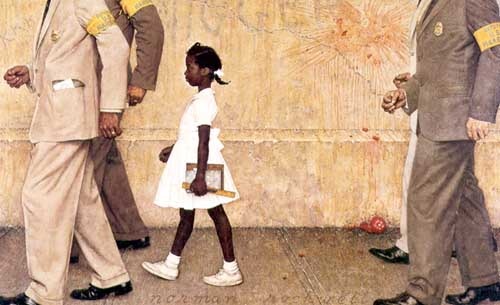
Reviews
1,217 global ratings
5 Star
4 Star
3 Star
2 Star
1 Star
Your evaluation is very important to us. Thank you.
